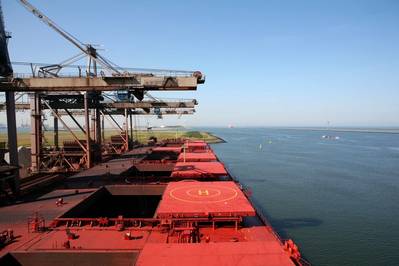Cargill Aims to Cut Ship Emissions 15% by 2020
Cargill Inc aims to cut carbon emissions from its international shipping unit by as much as 15 percent by 2020, to meet U.N. regulations to reduce pollution and demands from some of its food manufacturer customers for more environmentally-friendly operations.
The global commodities trader, which was scheduled to announce the emissions goal late on Monday, told Reuters the reduction of CO2 per cargo-ton-mile was targeted at its time-chartered fleet. But overall, Cargill plans to cut total greenhouse gas emissions on an absolute basis across all company operations by 10 percent by 2025.
Cargill, the largest U.S. private company in terms of revenue, does not own any ships. Instead, it currently charters about 650 vessels worldwide - up from 330 in 2007 - making it one of the largest dry bulk and tanker shippers.
The Minnesota-based company has been trying to cut emissions, in part by leasing newer ships, which are more fuel efficient, and working with ship designers to develop new ships that pollute less, said Jan Dieleman, who heads Cargill's Ocean Transportation Business.
The company is also trying to convince the shipping companies it works with to install exhaust gas cleaning systems - known as scrubbers - and exploring the potential use of liquefied natural gas and biofuels to power freighters, Dieleman said.
But key questions remain unanswered, from who pays to retrofit older ships with technology to lower pollutants, to how different countries will enforce new United Nations emission standards.
"This is not a charity project. We're in a competitive space, operating in a market-driven economy," said Dieleman. "Things have to make economic sense, so we need to push [shipping companies] to be more efficient."
Food manufacturers these days are not only looking at how ingredients are produced at the farm level but beginning to examine every step along the agricultural supply chain, including the physical transportation of grains and other commodities, said Anda Cristescu, global operations manager for Cargill Ocean Transportation.
"The biggest driver, in the end, is the consumer," Cristescu said. "We are part of this supply chain - and what they want, what we all want, is matching with our own vision for the kind of business we want to run."
(Reporting by P.J. Huffstutter Editing by Tom Brown)














